-
Final Design Concept
08/22/2018 at 06:05 • 0 comments3D Rendering and CMF ( Color Material Finish ) Study :
-
Mockups and Low Fi Prototyping
08/22/2018 at 05:36 • 0 commentsAfter discussion with teachers and experts and evaluating the merits and demerits of each ideas, we decided to build mock-ups for the selected ones. These mockups will be presented to teachers and students under their supervision for feedback. A chosen concept will be worked upon later.
1. Puzzle Duck -> Mu Duck
2. Tasker
3. Braille Box -> Braille Hop
The video of very early stage prototype was as follows:Choosing the final concept
We presented these mock-ups to the experts for a feedback. The suggestions were:
Concept Positives Negative Mu Duck Easy for kids to relate to as it is similar to LEGO. Not Novel
Attendees need to take care of blocks
No semantic match
Costly to make
Only a small number of kids can playTasker Involves physical activities
Has a social aspect
Helpful in developing communicationDifficult to explain the rules of the game every time to the students
Constant need of a supervisor
No exact goal or wining strategy
No FeedbackBraille Hop Provides both learning and testing
Novel
Use of texture and bright colours
Allows physical playDifficult to assemble
Manufacturing
Lack of referencing that helps in orientation
Less feedbackHence, we choose to work on Braille Hop. Our aim is to develop open source games for people affected by disabilities. Hence, in proper spirit , we have open sourced our work to allow maximum reach. We hope many makerspaces /makers would contribute to this by suggesting changes and reproducing the design and installing it the schools.
We will now discuss the project as a build log.
-
Initial Ideas
08/22/2018 at 05:03 • 0 commentsAfter understanding the context and defining the scope of interventions, we ideated on several concepts. They are :
Concept 1: Tasker
Tasker, it is a game in which a user needs to perform a certain task within the time limit.
Age group: 4+Components
- Board has nine slots per player, 10th is the winning slot.
- Board consist five different types of tiles, It denotes the identity of the player during play, each tile texture match with a base which helps proceed to appropriate row slots correctlyRules
- Maximum five players can play this game. This game played under elder supervision to monitor player performing a task correctly.
- If a user could not be able to perform a given task correctly. A user is not allowed to proceed to next step.- A player completes all task successfully and reaches the winning slot going to win the game.
The board features two modes of Practice mode and Play mode
- Play mode users can play against each other
- Practice mode can practice different physical exerciseHow to play
- Switch on the Board
- Select type “play mode or practice mode” by hitting the push button
- If play mode selected players can choose an available tiles
- The audio clip starts playing, eg. Jump four times. The player holding tile one play first he/she should get up and perform a task within 10 seconds
- All the task monitor by elder supervision (teacher/parents)
- As the complete player task successfully can move to next slot and deposited the tile in it.
Learnings
- Body movement
- Collaborative play
- Cognitive skills
- Motor skills
- sensory developmentConcept 2 : Puzzle Duck
Students already interact with duck shape toy ( swing duck toy placed in the playground at their school during the recess students interact with it)
Age group: 3+
Components
- There are 4 puzzle pieces which can be disassemble from the duck frame. Every puzzle piece has its own texture, size, color & shape- On the de-constructed body of duck there will be tactile cues which will guide the user where the puzzle part should be placed
-Every piece of the puzzle is lightweight, easy to pick up and move around. Duck frame consist one gyro sensor which detects the motion and start playing music
- Each part of puzzle piece has unique vacant space to fit a magnetic shaped tile, magnet help to hold the tile during the play.- At every single piece of a puzzle, numeric number embossed on both sides. so a user can understand this is a first or second piece of the puzzle and number denotes that many shaped tiles can fix on a piece of a puzzle
How to play
- This is a multi-player game one or more than one children can play to solve a puzzle at a time
- This will be a group activity in which the children have to navigate the space and find the pieces of the duck body
- First each magnetic tiles needs to place correctly then the puzzle piece should be placed- After completing the duck shape once a child ride. Duck start singing nursery rhymes.
Learning
Concept 3 : Braille Box
- Increase social Interaction
- Collaborative play
- Motor skills
- Sense of satisfaction
- Spatial awareness
- Sensory developmentIt’s a multi-player game
Age group: 4+Rules
- Player start the game from the centre tile/box(which is shown in blue colour at the image)-Other participants going to give a word to a player for eg.Player got word “P”, a player needs to understand how to write P in 6 dots Braille.
- A player should remember a pattern of dots and visit to each box made a given
word. If player visited correct boxes and reach to home box successfully he/
she will win and get the another chance to play again
- If user miss the pattern of a word or place a foot on the borderline he/she loses the game and next player get chance to play the gameConcept 4 : Audio- tactile Alphabet book
Audio-tactile book consist all alphabet from A to Z and number from 0 to 9Age group: 2 year onwards
Number of players: It is a single player toyContents
- on the Left page of book tactile image of the object or animal (e.g., Pig image shown) with emboss word of the image and Braille pattern of the word- On the right page of the book, big tactile letter related to the image on right page with Braille dot emboss by side and connection strip with speaker
How to Play
- A user needs to connect strip to bridge a connection between page and circuit. As soon as the connection has been established. An initial beep recording is starting to play( audio recording is about the describing the image, it will give a hint to the user to identify a character.)
- A user needs to tap on the tactile alphabet to identify alphabet described by the audio speaker.
- Similarly when user tap on a tactile animal image on left page audio start describing the animal and start nursery rhyme related to that animalWe then showed these concepts to experts and teachers for their feedback.
-
Design Direction
08/22/2018 at 04:10 • 0 commentsThe design direction was to hence, work on these aspects:
- COGNITIVE : concentration memory logical reasoning analysing skills thinking skills
- SOCIAL : Expression emotions Understanding emotions,Language skills Verbal communication Non verbal communication
- SENSORY : Enhance senses, Material Movement/mechanics
- AFFORDABLE : Easy to use, Less Maintenance, Adaptable
-
Understanding the context
08/22/2018 at 04:06 • 0 commentsToday we worked on organizing the knowledge and started ideation on the possible ways in which kids can learn Braille.
The games have broadly categorized the games into 4 distinct categories.
- Cognitive Toys: Toys that stimulate thinking and problem-solving are cognitive toys.
- Physical Toys: Toys that help in developing the gross and fine motor skills are physical toys.
- Sensory Toys: Toys that stimulate the senses of hearing, smell, touch, sight, and taste are sensory toys.
- Social Toys: Toys that help children to develop social skills and understand emotions are social toys.
The various kinds of toys/facilities we saw were :
The major learning problems were :
- Motor skills:Delay in learning to crawl or walk
- Sensory development: Fear of new experience e.g. sound, texture,difficulty in developing body awareness
- Communication and social skill: difficulty in learning facial expressions and body postures
- Self-help skills: additional help needed as they can not observe and copy e.g. tying lace
-
Research at Blind School in Mumbai
08/16/2018 at 07:28 • 3 commentsToday we were at Kamla Nehru Blind School, Dadar, Mumbai to explore the current ecosystem available to blind kids to learn Braille. We interacted with the teachers to get an understanding of ways they use to teach Braille, various activities kids do at school, their schedule and course content.
 Ankit Bansod
Ankit Bansod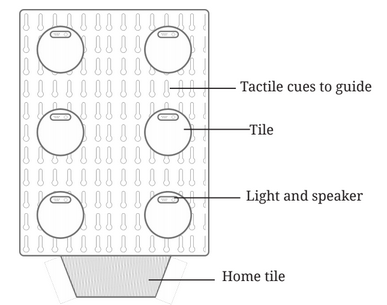
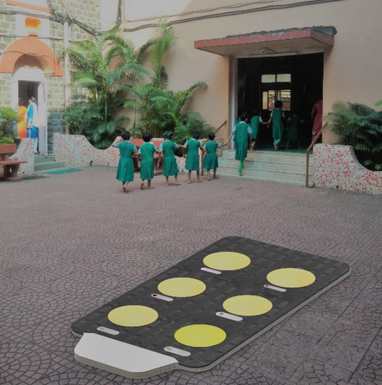
 2. Tasker
2. Tasker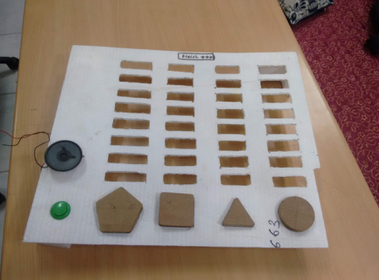
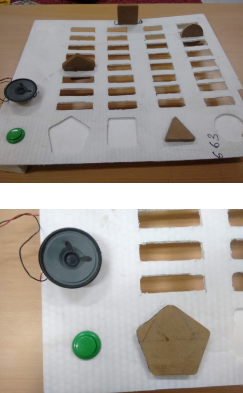
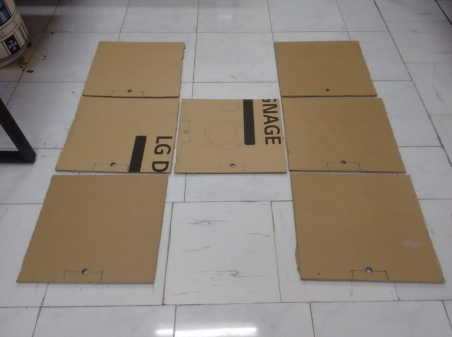
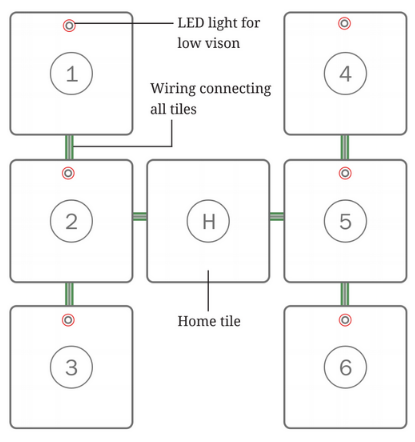
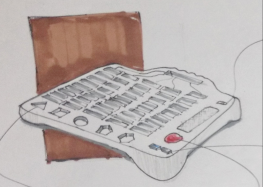
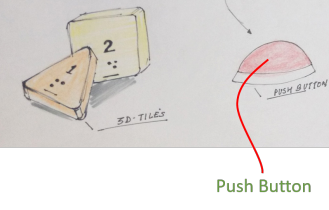 Concept 2 : Puzzle Duck
Concept 2 : Puzzle Duck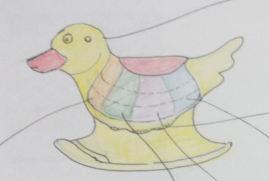
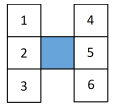 -Other participants going to give a word to a player for eg.Player got word “P”, a player needs to understand how to write P in 6 dots Braille.
-Other participants going to give a word to a player for eg.Player got word “P”, a player needs to understand how to write P in 6 dots Braille.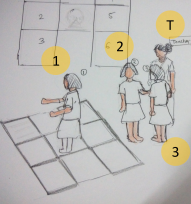
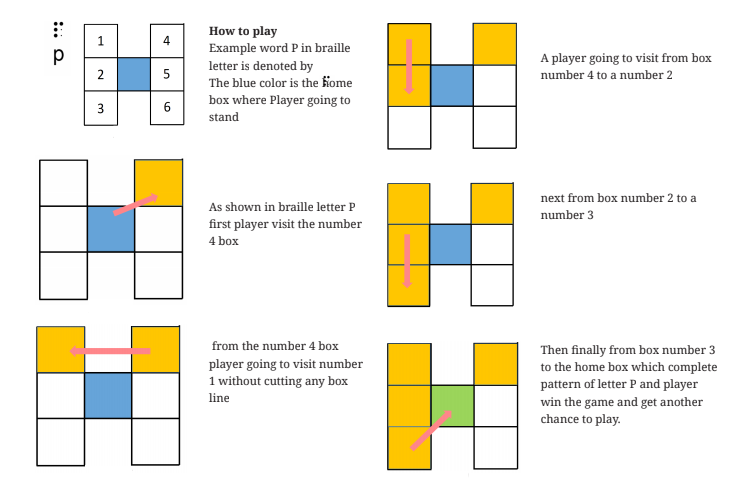
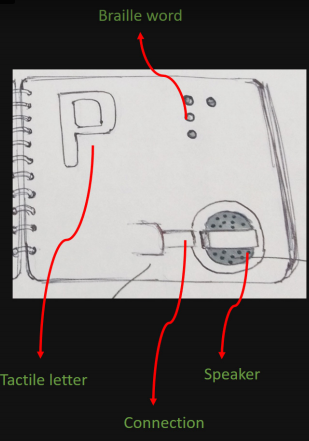

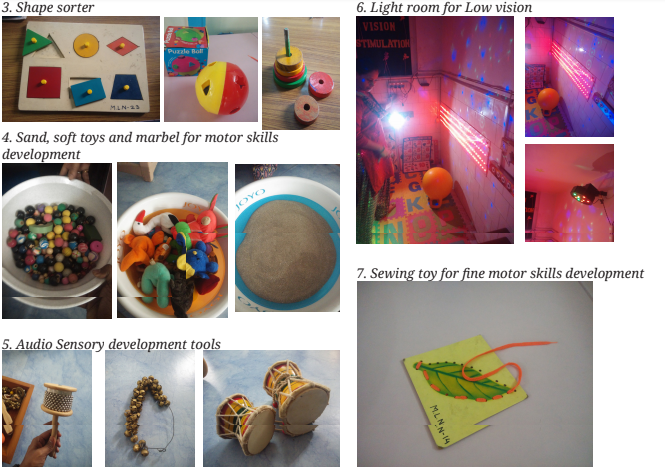 The major learning problems were :
The major learning problems were :